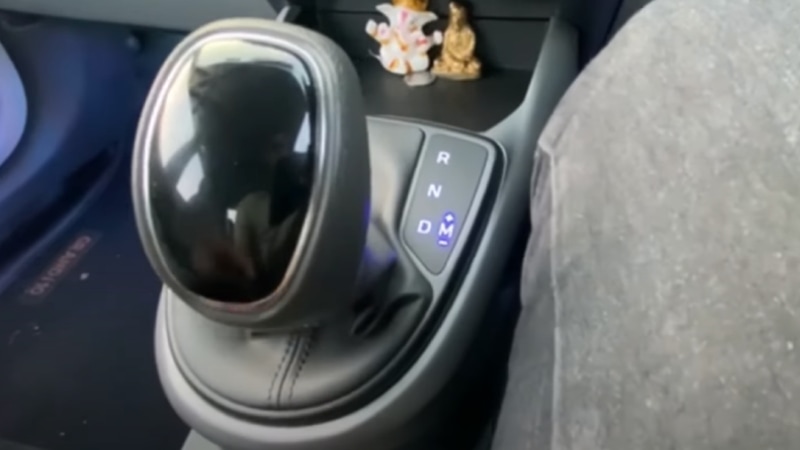If there is one aspect of today’s automatic cars that many of us appreciate, it is that the majority of them now come equipped with a manual mode, also known as a “M” mode.
Despite this, many drivers, particularly new drivers or people who aren’t familiar with automatic transmissions, are still perplexed by the question, “What does M mean on gear shift?”
In a nutshell, M on the gear shift is a manual adjustment that shifts the transmission into manual mode. We are here to help those people understand what “M mode” means, how to use it in automatic cars, and any other relevant information they may require.
Now is the time to read our article, find out what you don’t know, and learn more interesting information. Let’s get started!
What Does M Mean On Gear Shift?
The M (Manual) setting on the transmission is a manual adjustment that puts the transmission into manual mode. Typically, an additional “+” or “-” sign is added to this symbol to indicate an increase or decrease in the number.
The manual mode of an automatic transmission allows the driver to exert a great deal of control over the gearbox’s operations. You should switch to this mode if you prefer to drive manually or if the automatic gearbox isn’t working.
To provide further clarity, the M symbol is emblazoned on the gearbox in order to facilitate smoother and more versatile gear changes.
And you should be aware of the gearbox because it is the first thing to pay attention to when learning how to drive a new automobile or getting used to operating a vehicle for the first time.
Paddle shifters are an optional extra that can be added to specific models of automobiles that have an automatic transmission and a M (Manual) mode setting. The gearshift paddles are typically located on the steering wheel, which makes the process of changing gears more adaptable and convenient.
How To Use M Mode?
You must move the automatic gear lever to the +/- indication to put a car into M mode. When this occurs, the gear indication on the indicator panel will change from D to the gear that you are currently in. To make it more clear how to utilize this mode, here is a quick guide to getting started:
Step 1
You must first go through the handbook that comes with your vehicle before using the semi-automatic gearbox system. The manual will walk you through the operation of the system in your vehicle as well as the location of the important buttons.
Step 2
It is now time to start the vehicle and shift it into semi-automatic driving mode.
It is important to keep an eye out for the buttons that control the gear shift, which may be plus and minus signs or arrows pointing up and down. They change depending on the design of the vehicle.
Step 3
Keep your foot on the brake for the next step. Use the shift-up button to put the engine in first gear. You take your foot off the brake and lightly touch the gas pedal to move forward.
Step 4
When accelerating, you must press the ” shift-up ” button to raise the gear following the engine RPM specified in the user manual.
You have the option of manually shifting down to a lower gear by using the downshift button on the steering wheel, or you can simply let the automobile downshift for you as your speed decreases.
If you accelerate in your vehicle and hear a buzzing sound, the problem is most likely caused by a shift problem with the transmission.
If this is the case, you should immediately come to a stop and inspect your vehicle, as the humming sound you hear while you accelerate may result from damaged gears or low transmission fluid leaking.
When To Use M On Gear Shift?
There is a reason why automatic transmission cars have a M gear mode. By allowing the driver to control both the brakes and the accelerator, this function provides the driver with increased command over their vehicle. Taking the manual position can be helpful in many situations, including the following:
1. When Driving Downhill
If you are going down an elevated hilly road and you put your vehicle in Drive mode, you may be riding the brakes down, which is not good for the brakes and can cause the brakes to wear out more quickly.
This is due to the fact that the brakes run the risk of overheating, and if they do so, they will no longer perform as intended. If, however, the mode is set to manual, you can shift down 1 or 2 gears to allow the engine to perform some of the brakings for you by applying less pressure to the brakes.
2. When More Power Is Required
Another example of this would be when additional power is required, such as when you want to pass another vehicle parked on the opposite side of the road and you need to pick up your pace.
When driving certain types of automobiles, if the mode is in the automatic position and the driver presses down on the accelerator pedal, the transmission may not immediately shift down to provide additional torque. In this situation, putting your vehicle into manual mode and selecting the gear you want to use would increase the power without requiring you to wait for the transmission to do so.
FAQs
Can I shift from D to M while driving?
You can definitely do that without any hesitations. This is why modern automatic gearboxes often include a manual mode as an additional control option. It could switch from D mode to mode while it was transported.
Therefore, you can switch from “D” (Drive) to “M.” (Manual). On the instrument panel, there is a shift indicator that will show the current gear that is being used.
Upshifting can be accomplished by moving the handle to the plus position on the steering wheel. To begin downshifting, move the lever to the opposing position on the gear shifter. This will put you in the first gear.
What are D and M in automatic vehicles?
These symbols are seen on the gearbox of an automated manual transmission: M indicates “Manual mode,” “R” means “reverse,” “D” refers to “Drive,” and “N” stands for “Neutral state.”
Is it bad to drive an automatic like a manual?
The good news is that driving an automatic vehicle as if it were a manual vehicle won’t cause any damage to the vehicle. Power is transferred from the engine to the driveshaft with the use of a fluid in an automatic transmission, as opposed to a manual transmission, which requires you to use up a little portion of your clutch disk each time you shift gears. Therefore, you are not contributing to any additional wear and strain.

Helen J. Whiteaker is a journalist with ten years of experience in many fields. She has a degree in journalism from the University of Missouri and has worked in print and online media. She has written for several major publications, including The New York Times, The Washington Post, and The Huffington Post. She has also been a contributor to several lifestyle and travel magazines.
In her work, Helen has always strived to provide accurate and fair coverage of the topics. Whether writing about the latest trends in home decorating or reporting on an important news story, Helen is dedicated to her craft and delivering the best possible information to her readers.
Helen was one of the first people to join ThisIsGuernsey and laid the foundation for the development of TIG. Currently, she holds the position of Editor in Chief, responsible for training and testing writers and coordinating with other departments to bring the best articles to readers.
